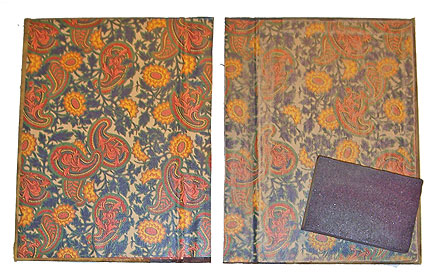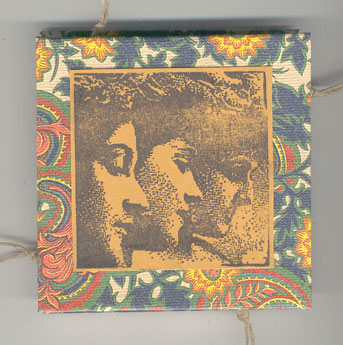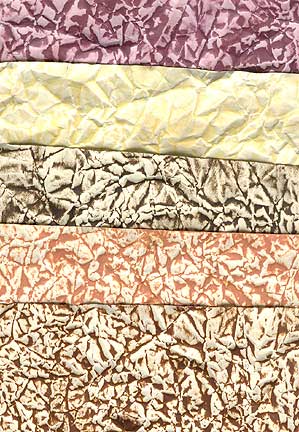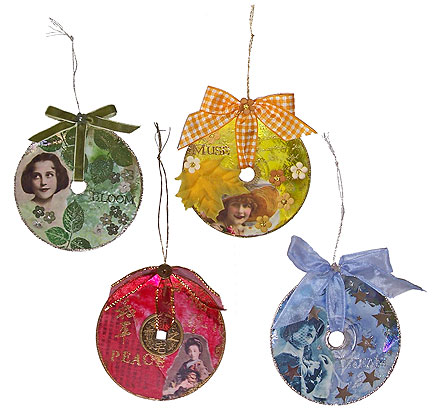
This week’s lesson is short and sweet. The photo above shows the inside of two book covers, both of which have been re-lined in printed paper. The one on the left shows the paper as purchased, glued in place. The one on the right shows the same paper after sanding with a sanding block. Any questions?
Sanding is an almost immediate way to age most printed papers. In the case of my example, I was working with a paper that looked brand-spanking new, both in terms of the intensity of the colors, and the shiny surface finish. Sanding toned the colors down, and completely removed the shine from the surface.
I prefer sanding blocks to sanding paper because they’re easier to hold. I usually buy mine at the hardware store, in the paint supply section. My favorite is coarse on one side, and medium on the other. I have one that’s fine on one side, and I hardly ever use it.
One thing to note about sanding blocks is that they pick up the ink color of whatever is being sanded, as sort of a fine dust. This is a good thing while you’re sanding that piece, because the dust tones the piece and mellows the colors, but not so great when you move on to the next piece, whose colors may be completely different. Wipe the blocks down with a soft cloth after use to remove any loose dust. I’ve actually exploited this quality by sanding a gessoed board, then sanding a paper I wanted to lighten—the white dust gives a sort of ghostly haze to the paper.
That’s it for today. Now, go sand something…




